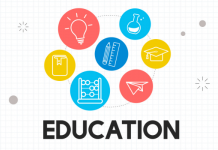Indian youth are increasingly dismissed by degrees as they grapple with an acute shortage of skills relevant to the workplace. Does the current education system have a role to play in this malaise and what can be done?
With conventional degrees rendering Indian youth run-of-the-mill, skills become the only differentiator between the job seeker and employability. Workplace-based experiential skills development integrated with mainstream education is the only way forward to address the education-jobs mismatch crippling the Indian labour market. This requires an urgent monumental mindset shift among educators, policymakers and industry- to hold their hands up and recognise that Indian education requires a paradigm shift towards a ‘learning by doing’ approach.
What’s Ailing Indian Education?
John Dewey, the influential 20th-century education reformer, summed up how education can fuel change when he said, “The real process of education should be the process to think through the applications of real problems.” This belief snugly fits into an immersive ‘learning by doing’ model.
Let’s start with the highest employable crop- engineers and MBAs. A mere 52% of the 1.5 million engineering graduates churned out each year are employable. And of the 3,60,000 MBA students from around 4000 B-schools in India a whopping 61% are unemployable due to skills shortages and no work experience, states the India Skills Report 2018. This brings into serious question the relevance of India’s higher education system, the third highest globally with 760 universities. It is clear as daylight that our youth need exposure to hands-on learning and workplace based skills training such as apprenticeships before they leave the education system. What use is years of toil in education if the lack of market relevance forces graduates to immediately enroll in professional courses to gain the skills they should have acquired within the education system itself?
Let’s play out an example of the predicament faced by Indian youth forced to look at non-aspirational jobs despite being educated. Over 200,000 youngsters, mostly armed with engineering, Masters and Bachelor’s degrees applied for 1,137 police constable vacancies in Mumbai. The pre-requisite qualification for these jobs was a 12th pass. It is not uncommon to come across such accounts indicative of a serious tweaking required in Indian education to:
a) Make a 3-4 year degree program more meaningful
b) Integrate apprenticeships and vocational skills training alongside higher education
c) Prepare and match youth with the right skills for the right jobs at the education stage
Hard on Skills
There is clearly not enough emphasis on the value of ‘learning by doing’ compounded by a failure to understand that many competencies (technical and soft skills) that employers seek can only be acquired through firsthand experience. This places India at a great risk of losing out on leveraging its demographic dividend where over half the population is under the age of 25.
Professions such as in medicine and law require completion of an apprenticeship or similar work experience before candidates are certified. Adopting similar workplace based training to other disciplines can become hugely beneficial to both employers and graduate job seekers. Competencies that are mastered in a real job environment can seldom be taught in a class-room alone. Education has a huge role to play in ensuring that skills development and job creation are matched with a much stronger focus on vocational skills training than the system currently allows.
Dual Educational System
The same argument holds true for school drop-outs. Lowering the entry-point for vocational skills training as an alternative to a degree-based education is paramount in ensuring that the lakhs of youth who drop out from formal education at the secondary level do not fall through the cracks.
A more impactful education would be one imparting dual learning i.e class-room based for the knowledge acquisition element and an on-the-job component. With flexible entry and exit points integrated with mainstream education. For instance, the National Skill Development Corporation (NSDC) is considering skills training combining four days of shop floor experience with two days of formal education under the Apprenticeship Act. The NSDC is also working with 7,000 schools in Himachal Pradesh and Haryana to include vocational education in the school curriculum for students as young as class 9. The idea is that a child is already certified to Level 3-4 by the time s/he gets to 12th standard making them job-ready immediately.
Another way to introduce duality in education is to identify which hard and soft skills are job critical and provide opportunities to enhance the market value of both vocational training and conventional degree students by opening up access to work-place learning such as apprenticeships and external training programs.
Workforce Forethought
The school-to-college-to-employment path has hit a number of roadblocks in India owing to a gaping disconnect between higher education and work opportunities. Apprenticeships and other learning by doing skills training represent a progressive education. To better align jobs with skills India needs to change the way it educates (trains) students from a ‘listen and regurgitate’ system to a practical skills-based one where the workplace becomes a learning laboratory.














